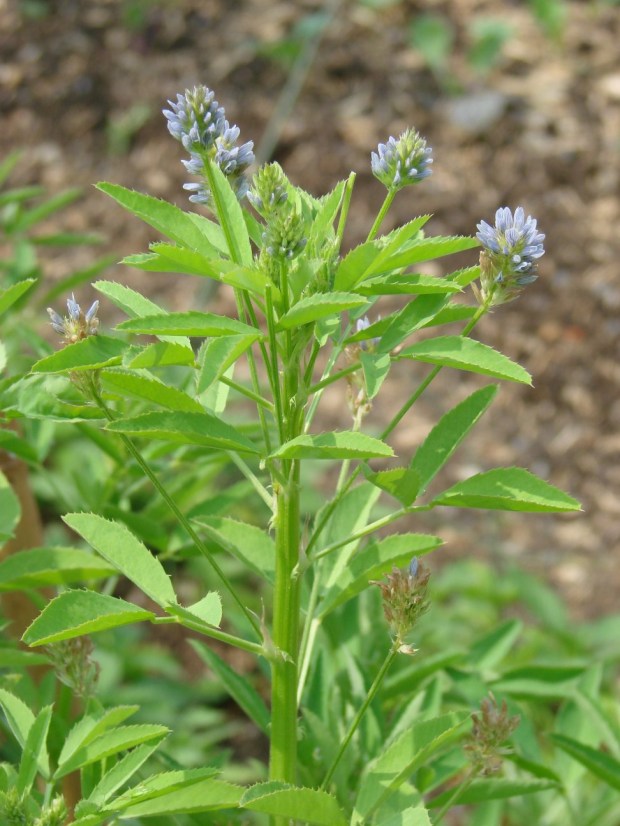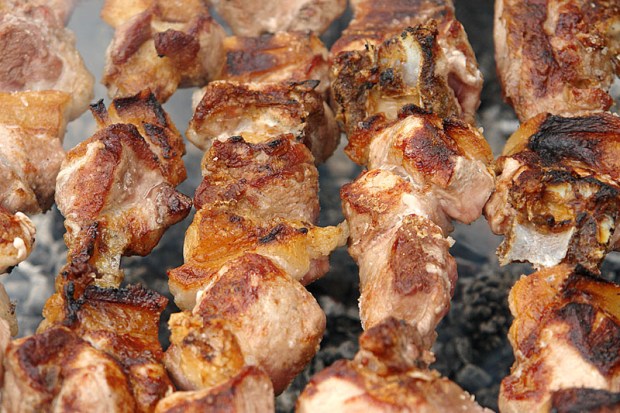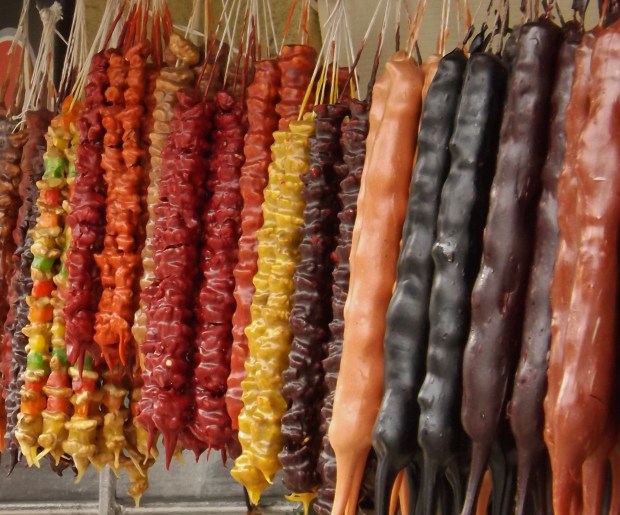Georgia is one of the most charismatic places I have ever been to. Its landscapes, people, wine, and food exude boundless energy, unrivaled by anywhere else I’ve experienced. Geographically, the Caucasus—the region Georgia is part of—is flanked by Turkey, Iran, and Russia, and you can feel those countries’ influences on the cuisine. Yet Georgian food is also extremely idiosyncratic. Despite being surrounded by some extremely intense neighbors, Georgians have managed to preserve and develop their own language, culture, and food.
When I was growing up in the Soviet Ukraine, everybody knew Georgian dishes. Every Soviet town from Kaliningrad to Kamchatka had a Georgian restaurant. However, when I began researching my book on the cuisine of the Caucasus a few years ago, Georgian food was so much more than I knew—the diversity of the dishes in both seasonal and regional terms was astounding.
Georgian cuisine has always had a reputation as being meat oriented, but—especially in rural areas where people rear their own animals—I found that cooking with vegetables, beans, and fruit is also popular. The country is blessed with incredible grapes, plums, eggplants, tomatoes, beans, walnuts, hazelnuts, quinces, tangerines, soft herbs, and numerous wild greens, which one can easily find at the farmers markets. And whereas neighboring Azerbaijan uses vinegar mostly to pickle vegetables, Georgians are master fermenters. The pickled vegetables and fruit sections at markets and in people’s cellars are mind-blowing.
Samegrelo, in western Georgia, closer to Turkey, uses quite a lot of chili. In the Imereti region I have tried some outlandish mushrooms, and in the east they cook pork neck over grapevine embers.
The Soviet Union did major damage with its aggressive industrialization and collective farming, almost completely destroying some ancient techniques of preparing food and wine. But luckily there are now people reviving tradition and forgotten crops, like the red and black doli wheat that grows on mountain slopes as well as many grape varieties. The wine is made in antique clay amphorae, called qvevri, which are dug into the ground.
The eating culture is as important as the actual food. Georgians have supra, literally “tablecloth,” referring to the multitude of dishes brought to the table during a feast. There are so many offerings that the platters cover the table completely, like a tablecloth. The toastmaster, called the tamada, leads the feast. There are no simple “Cheers!” though. Each toast turns into a philosophical discussion, lasting well into the night. Before bed, a beef stock called khash is put on the stove. Served in the morning with a pot of salt, minced garlic, and herbs, this viscous broth (seasoned to one’s personal taste) is the most restorative hangover cure I know of.
I sometimes imagine that this was the way Georgians managed to preserve their own flavors of life, given all their bellicose neighbors. Come drink with us. … Let us talk and toast and charm you. Try this food. It is a portal to our souls.

Roots, shoots, seeds, and greens
Georgians eat vegetables according to what’s in season—and that involves respecting meat seasons, too. In areas where people rear their own animals and can’t afford to slaughter them, there tend to be many vegetable and bean dishes, enriched with high-in-protein walnut pastes.
One of the cornerstones of the food culture is a thick paste of walnuts, garlic, marigold powder, blue fenugreek, oil, and vinegar. It is used to dress myriad vegetables. Depending on the season, the base could be green or yellow beans, beetroot, mushrooms, and foraged greens like ekala (climbing, flowering smilax excelsa to you and me). The paste is sometimes pounded with spinach or grated beetroot and rolled into balls, then decorated with pomegranate seeds.
One of the best things made with beetroot is a dish called charkhali, which turns beet haters into beet lovers. First you make tkemali by stewing whole plums with a splash of water. Then it’s passed through a sieve and the remaining puree is seasoned with salt, cayenne, crushed garlic, dill seeds, and pennyroyal. Tkemali is one of the most versatile and ubiquitous condiments in Georgia, served with meat and fish and even cooked with eggs. Just imagine sweet beetroot seasoned with a sour, salty, and spicy plum sauce—it’s a culinary revelation.
Beans are another favorite. A hearty dish called lobio can be as thin as soup or as thick as stew, usually seasoned with local spices, including the complex and musky blue fenugreek. Finally, herbs are paramount seasonings. A heady mixture of cilantro, red basil, tarragon, and dill is used in copious amounts as garnish for many a dish. One of my favorites is the early summer ratatouille–style number called adjapsandali. Summer vegetables such as peppers, tomatoes, and eggplants are gently stewed in a clay pot; then the flavor bomb comes after. Tarragon, basil, dill, and cilantro are bashed together with raw garlic and salt and stirred into the dish just before serving. Which leads us to the next cornerstone …

Salt and flavor
Georgians have a very special way with flavoring salts, which can come as dry flavored salt pellets or as a wet salty paste. In Samegrelo red adjika is one of the best seasonings I have ever tried. Salt, raw garlic, blue fenugreek, and red chili are ground together and then sprinkled over meat, eggs, and even green leaves.
Another outstanding flavored salt found in the region is called mint adjika. It is a simple blend of (a lot of) salt, mint leaves, garlic, and green chili. It keeps in a jar for ages, even retaining its bright green color. It goes especially well with all sorts of dairy—try it on toast with mild goat’s cheese and a piece of seasonal fruit, like persimmons in winter and peaches in the summer.
The mysterious, blindingly beautiful mountain region of Svaneti creates its own salt, appropriately called Svaneti salt. It is similar to red adjika. Raw garlic, salt, and local spices such as wild thyme, coriander, blue fenugreek, and dill seeds are run through an old-school meat grinder, creating the most fragrant seasoning. It is used to top homemade yogurt, called matsoni, or in meat pies—of which we will speak later.

Beasts of land, sea, and air
I grew up watching men douse meat in vinegar and onions before throwing it on the barbecue, which they called Georgian shashlyky. What I discovered in Georgia, however, was far removed from the mediocre Soviet version. This barbecued meat is called mtsvadi in Georgia, and it is genius in its simplicity. Dried vine clippings are thrown into a barbecue grill and burned until the coals become fragrant. Pork neck is then skewered and basted over the fire with a mixture of red or white wine and salt. This process creates the most delicious savory crust and tender meat, just cooked, almost pink. The meat is taken off the skewer with a flatbread, which becomes soaked in pork juices. A simple red onion, pomegranate, and parsley salad is served on the side.
With the first green leaves and lambs comes chakhapouli, a dish of young lamb braised with heaps of sour plum, tarragon, dill, cilantro, wild garlic, spring onions, and any young green shoots and herbs. The liquor, after all the meat has been eaten, is drunk out of a cup as yet another perfect hangover cure.
The best chicken dish ever, in the history of anything, is tabaka. A young chicken is spatchcocked and browned in a frying pan, then weighed down by something heavy (like an old-school iron or pestle and mortar) and cooked in the pan until tender. It is then doused in oil that’s been infused with garlic. I go one step further and add butter to mine, along with lots of tarragon, basil, and dill.
To mention Georgia and not its famous meat dumpling would be a crime. Khinkali are incredible. They look like money bags, and they contain riches inside. Pork and beef or lamb is mixed with plenty of black pepper, chili, cilantro (sometimes), Georgian spices, and lots of water to create that liquid that turns khinkali into a true soup dumpling. Poach them, then douse in butter and more black pepper. Bite a tiny bit off, suck out the juice, then devour with abandon.

Sun, milk, flour, and ash
Cheese is king in Georgia. In fact, in West Georgian dialect, bzha means both “sun” and “milk”—the sacred essentials. Georgian cows are skinny and agile, almost like massive mountain goats. They produce less milk than regular cows, but boy is it rich. Georgians make fresh cheese, called Imereti cheese in most places. When salted in a barrel of brine, this cheese becomes suluguni. The most famous Georgian bread, called khachapuri, is filled with either Imereti or suluguni cheese, and it’s a true joy. There is a boat version filled with egg that you may know of, called Adjaruli khachapuri, but there are so many others. Ossetian pies, for example, are filled with cheese, herbs, chard or pumpkin, and pomegranate seeds.
There is also kada lobiani—an intricate layered bread filled with caramelized onions and mashed red kidney beans. And you must try the meat-filled kubdari pies from the mountains of Svaneti, flavored with the aforementioned salt and lots of pepper and spices.
Finally, roadside bakeries with tandyr ovens (similar to the Indian tandoor) produce elongated breads called tonis puri. We tried some with homemade buffalo butter (as good as cheese; I could have eaten it with a spoon) and with funky salty cheeses from the Tusheti mountains that had been aged in lambs’ stomachs.

Summer in a 3-liter jar
Let’s talk about the funk. Georgians are very serious about preserving their vegetable glut, so anything from gherkins to whole cloves of garlic are thrown into a weak brine in September and left to lacto-ferment. One of Georgia’s most special ferments is called jonjoli, also and less glamorously known as bladdernut. It is an endemic shrub with gorgeous clusters that vaguely resemble capers. These unopened flower buds are foraged and packed in massive jars with salt. Fermented, they are sour, funky, and unlike anything else you’ve ever tried.
One of the best ferments is made with green tomatoes. They are slashed and stuffed with celery leaf, garlic, and chili slices. Ferments in Georgia are served with nutty, unrefined sunflower oil and sliced raw onions.
Georgians are not keen on puddings, but they are masters at preserving fruit. Whole callipygian peaches preserved in sugar syrup, tklapi—fruit leather made out of plums, mulberries, apples—you name it. All you need is lots of fruit, a 2.6-gallon cauldron, an oar for a stirring spoon, and some sunshine to dry out the puree.
They use grape must mixed with corn flour to make pelamushi, a kind of porridge. Another favorite dessert is sweet walnut preserve, but the young pinecone preserves are an inspiration—they tastes like a sweet conifer forest. Georgians also make churchkhela—walnuts encased in grape must—which look disconcertingly like sausages. One of the best sweets is called gozinaki, a honey and walnut brittle adored by children at Christmas.